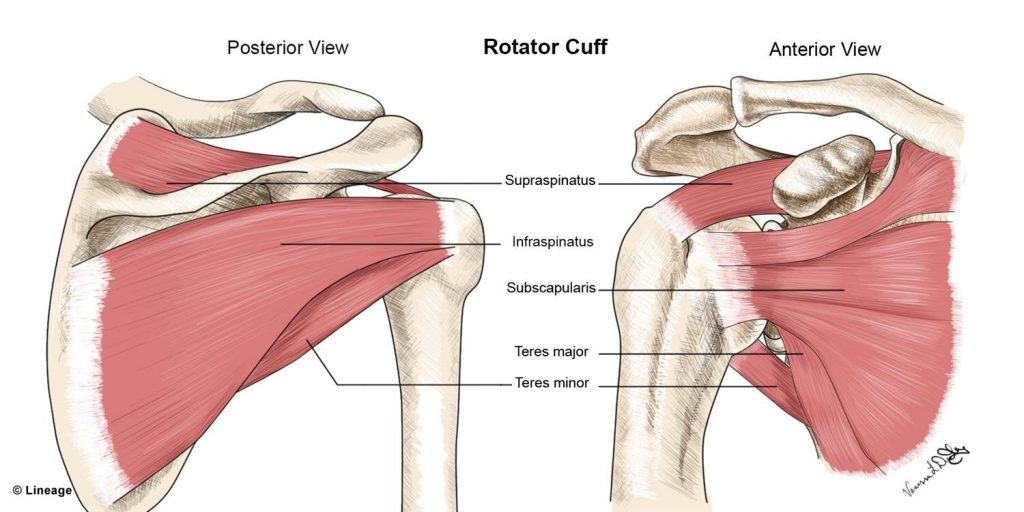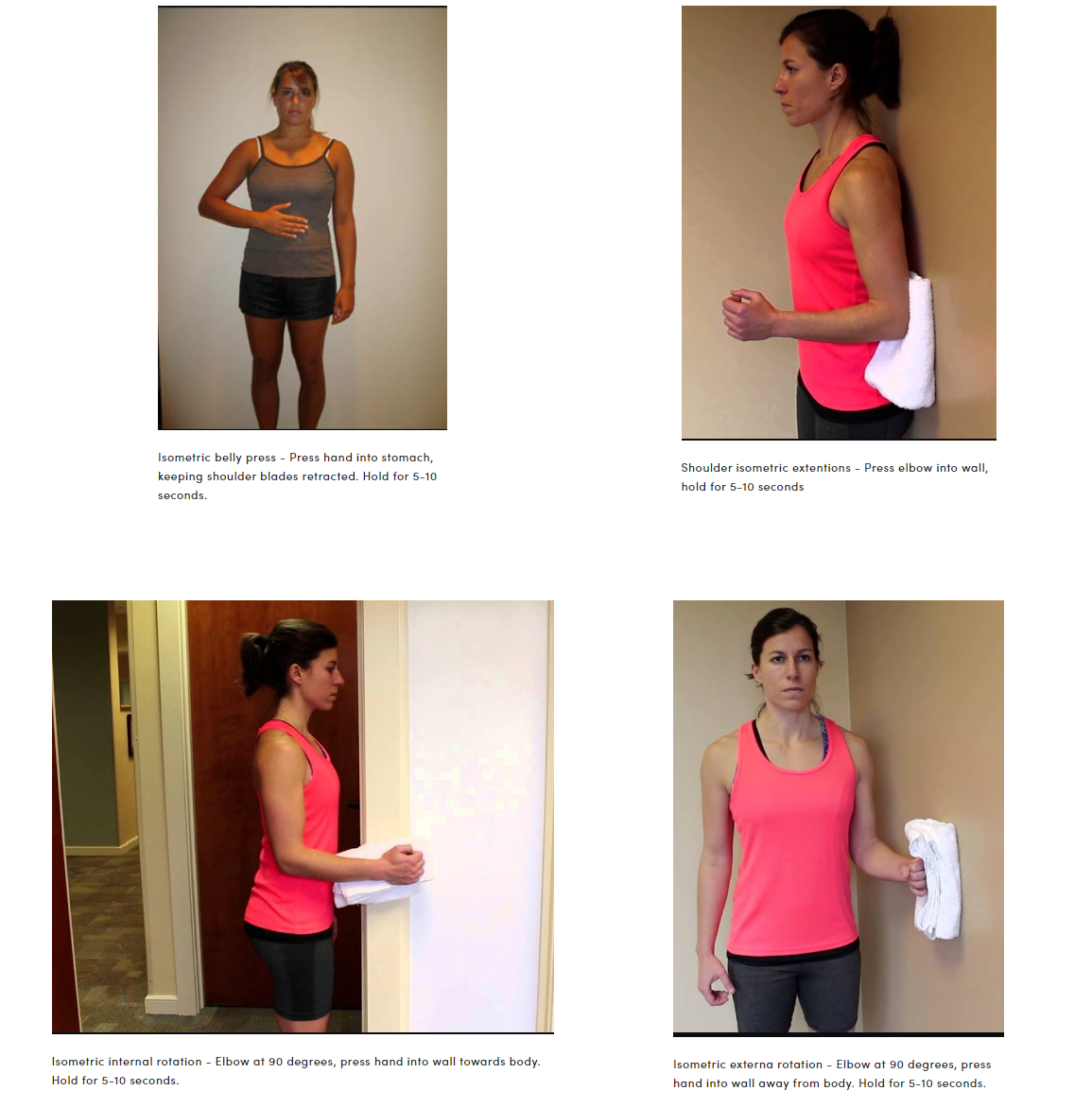Note: This post was originally made by Skeptical Fitness in association with Grit Tennis
Tennis, baseball and football, you don’t often hear the terms ‘shoulder injury in sport’ without hearing one of these sports in the same sentence. It’s not without reason either, these sports all boast the highest rates of shoulder injuries due to their highly repetitive nature and the amount of force needed being the perfect environment for injury.
Anyone who plays a sport that uses a lot of quick, throwing motions (especially when under load) need to be aware of their shoulder health as there is a significant amount of strain put upon the muscles and tendons comprising the rotator cuff, and knowing why and how to keep your shoulders healthy can protect you from injury long-term.
The rotator cuff

The rotator cuff is a group of 4 muscles and tendons that help protect the shoulder as well as acting to stabilise the shoulder joint, lift your arm up and rotate the humerus (your upper arm). A way to help you remember them is to think of them as the SITS muscles.
- S upraspinatus – Holds your humerus in place and keeps your upper arm stable. Helps to lift your arm.
- I nfraspinatus – The main muscle that allows your humerus to rotate and extend your shoulder externally
- T eres minor – Main job is to assist with externally rotating the arm away from the body
- S ubscapularis – An important muscle in keeping your humerus in place as well as rotating the arm internally and raising it.
A rotator cuff injury is the most common shoulder injury because this area is so important for any motion involving throwing. Tennis and baseball both require a large amount of force to be produced very quickly, and this movement is done repetitively. Done correctly this is unlikely to cause an issue, but joint instability, which can be increased by muscular imbalances or muscular weaknesses is a leading cause of deterioration of the rotator cuff (RC) over time. Sitting for long periods of time can increase the chances of these imbalances, with the muscles that pull your shoulder forward (your pec major and minor) causing a consistent internal rotation and a subsequent weakness of your external rotators.
Having strong rotator cuff muscles is important as weak rotator cuff muscles are associated with a greater risk of rotator cuff injuries.
Your mobile shoulder
The shoulder, formally known as the glenohumeral joint, is a ball and socket joint (another example being the hip). This type of joint is known as the most mobile but least stable joint in the human body, making it’s very useful for all the complex tasks we use our arms for, but prone to injuries.
Your rotator cuff muscles (as well as your deltoids, triceps, pecs and lats) all act to stabilise and protect your shoulder while allowing for a high degree of motion.

The rotator cuff in sports
We know that our shoulders have a high degree of motion and that repetitive motions can cause injury, but why? Tennis is a perfect example as tennis players are especially prone to rotator cuff injuries due to the demands the sport places on the shoulder musculature.
When we break down the biomechanics of a tennis serve, the arm goes from rapid external rotation when preparing for the serve, to rapid internal rotation during the serve. As external rotation is biomechanically a safer position for your shoulder (a more stable position for the joint) any movement that uses rapid internal rotation can be an injury making machine if there are incorrect form and weak muscles. Shoulder injuries are often caused by an acute, traumatic event, like a high powered hit when the arm is in a poor position, or a repetitive motion which over time causes deterioration of the shoulder capsule or the rotator cuff muscles.

If you look at the majority of movements in tennis, when hitting a ball you go into external rotation without load, and then quickly go into internal rotation when hitting the ball (load).
This imbalance between external and internal loads ends up with the internal rotators taking the majority of the load and over time becoming the stronger muscle group if not specifically strengthened.
Common injuries of the rotator cuff
The high range of motion allowed by the shoulder is great for movement but also allows injury to occur when pushing into a compromised position. Common injuries to the rotator cuff include rotator cuff tears (partial or complete tears of any of the SITS), rotator cuff tendinitis (short term irritation) or tendinopathy (long term inflammation or degeneration of the rotator cuff tissue) and impingement syndrome (pinching of the tendons).
Rotator cuff injuries
How can you tell if you have a rotator cuff injury? Without professional examination, you can’t always tell as RC injuries or tears aren’t always associated with a loss of function or pain, however, looking out for its symptoms can be an important indicator of injury.
Symptoms of rotator cuff injury
- Pain – May or may not be present, usually localised on the front or side portion of the shoulder with pain going down the upper arm.
- Painful range of motion – Raising arm may cause pain (usually above shoulder height). Internal and external rotation may also create pain.
- Functional impairments – Loss of strength lifting, pushing and doing overhead movements and movements with the hand behind the back.
- Muscle weakness – Shoulder joint weakness, usually when raising arm and during external rotation.
Note: It’s important to note that the risk of a rotator cuff tear increase with age and also that over half of all rotator cuff tears are asymptomatic (show no symptoms), so make sure to check in with your GP.
Keeping your shoulders healthy
If you play a sport that uses these throwing movements, both casual players and pro’s alike are at risk of shoulder injuries if not done correctly. It is better to prehab an area to prevent injury in the future, than to have to rehab an injury after the fact. A combination of correct form and resistance training are best to prevent future rotator cuff injuries as well as keeping you able to perform your best.
Shoulder strengthening program
Program is broken into stage 1 and stage 2. Do stage 1 workout 2-3 times/week aiming for 10-second holds for 5 reps. Only progress after you have done stage 1 for a minimum of two weeks with pain-free movements. Stage 2 can be done using weights and progressed by slowly increasing weight over time. Do not do any movement that causes pain.
Note: These exercises should be used as guidelines, please consult with your GP or an exercise physiologist for individualised exercise prescription.
Stage 1
Do workout 2-3 times/week, holding each movement for 5-10 seconds. Start by doing each movement 3 times, progress by doing more movements, aiming for 3-6 sets per movement.

Stage 2
Progress to stage two after doing stage 1 for 2 weeks with no pain

